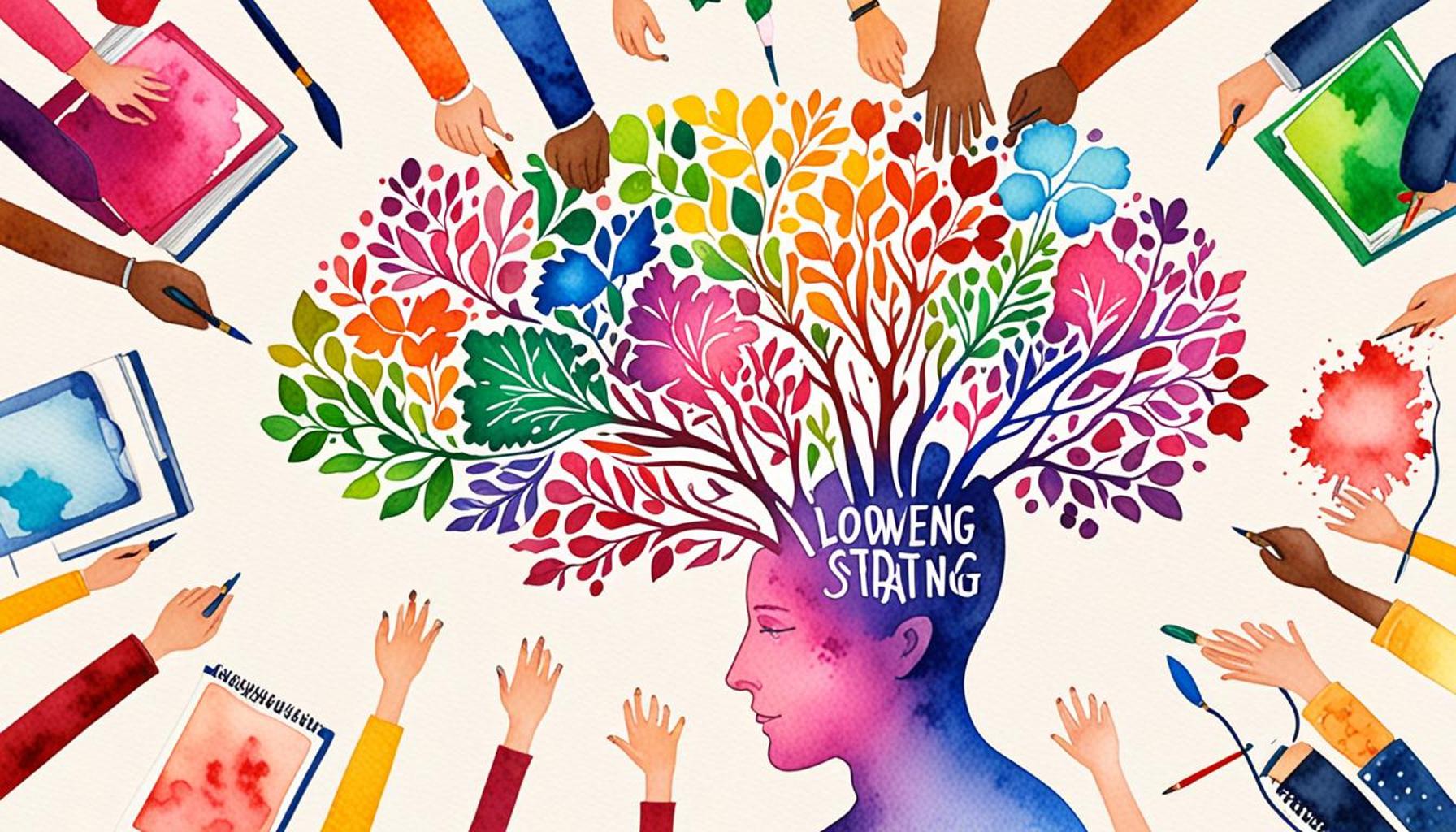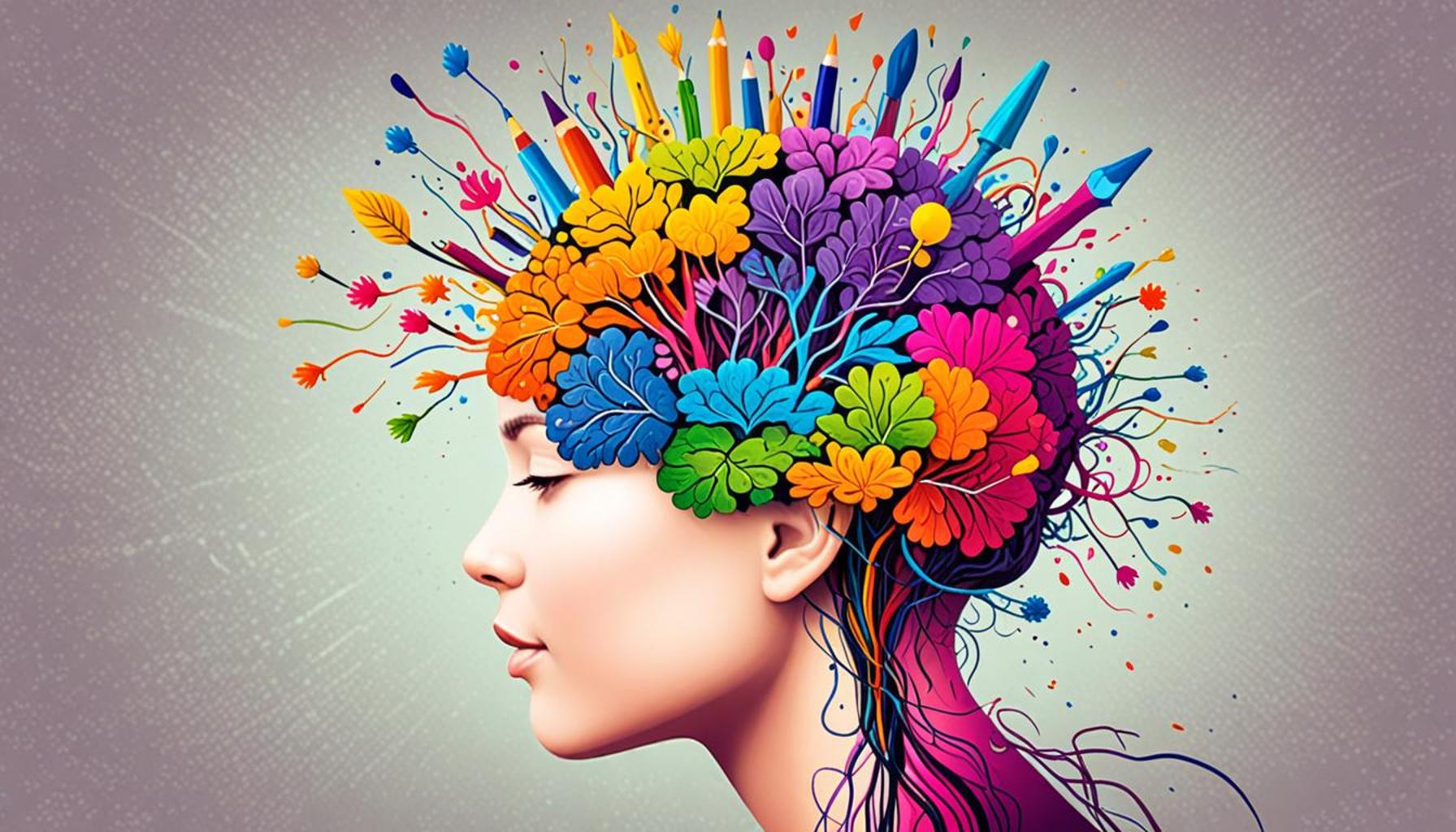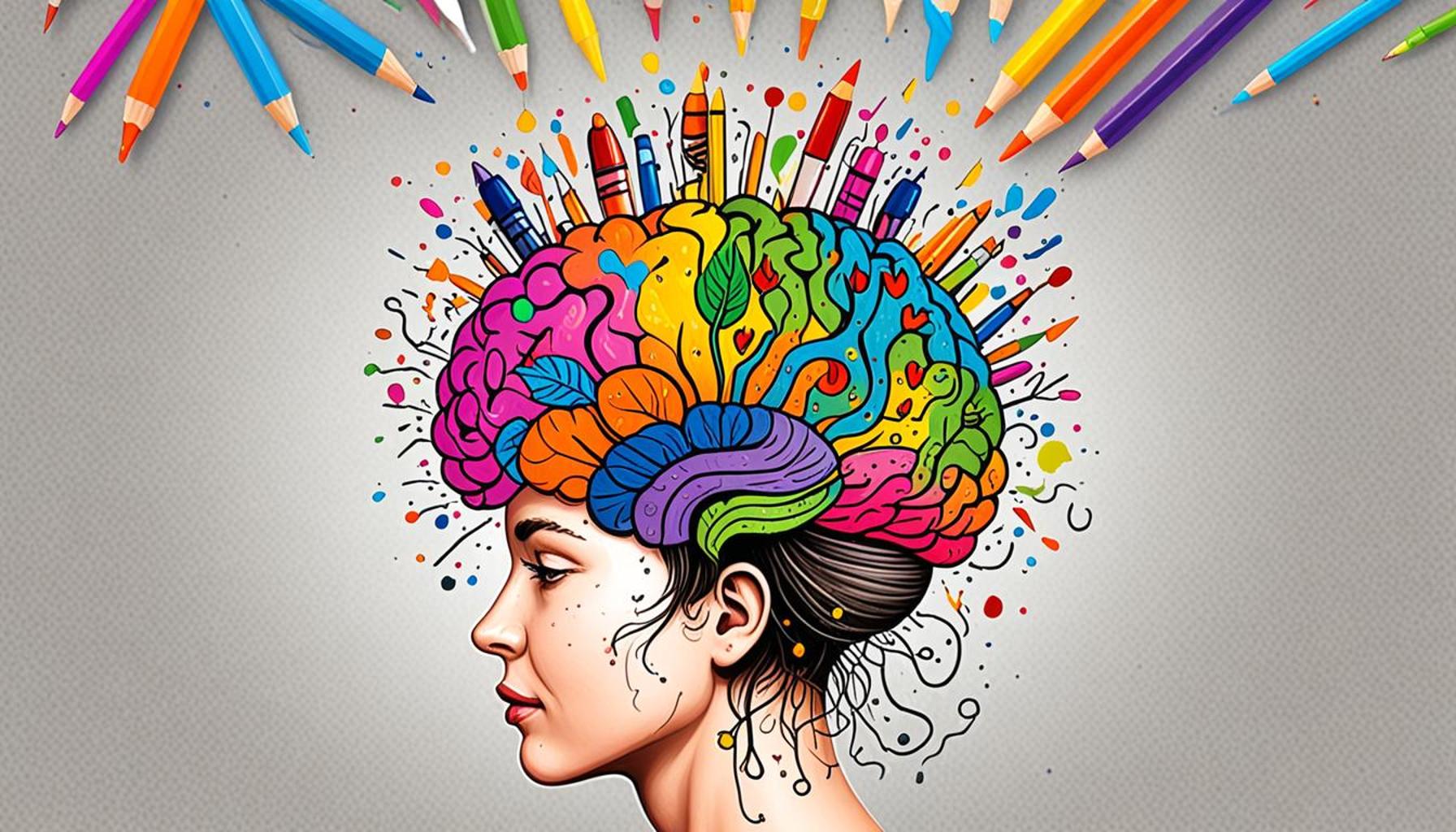Collaborative Learning Strategies to Foster a Growth Mindset Among Students

Embracing a Growth Mindset through Collaborative Learning
In today’s dynamic educational environment, the importance of cultivating a growth mindset among students cannot be overstated. This mindset empowers learners to tackle challenges head-on and to perceive failures not as roadblocks, but as stepping stones towards success. Collaborative learning strategies emerge as a vital tool in this transformative process, providing students with opportunities to learn and grow together.
When students engage in collaborative learning, they are not only working on academic tasks; they are also exposed to a rich tapestry of diverse perspectives. This not only enhances their critical thinking skills but reinforces resilience. For example, consider a group project where students tackle a complex topic, such as climate change. As they research together, students from different backgrounds might bring unique insights based on their experiences, sparking discussions that push their thinking further. One student might connect local effects of climate change in Nigeria, such as flooding in Lagos, with global patterns, enhancing the richness of the conversation.
To harness the full potential of this collaborative learning approach, consider implementing several key strategies:
- Group Projects: Students can work in diverse teams, sharing responsibilities and leveraging each other’s strengths to achieve common goals. This setup not only facilitates teamwork but also nurtures a sense of accountability.
- Peer Teaching: By explaining concepts to classmates, students reinforce their own understanding while honing their communication skills. In subjects like mathematics or science, students might clarify difficult concepts to each other, solidifying their grasp.
- Think-Pair-Share: This method encourages all students to engage in discussions. After contemplating a question, students pair up to share their thoughts before presenting to the larger group, allowing even the more reserved individuals a chance to express their ideas.
The benefits of collaborative learning extend beyond academics; they also foster essential social skills. For instance, students in Nigerian classrooms can engage in community projects, collaborating on initiatives that address local issues such as waste management or educational outreach. Such projects connect theory with practice, illustrating the impact of their education on the world around them.
As educational institutions worldwide strive to equip students with the skills necessary for the complexities of the modern economy, the implementation of cooperative learning strategies becomes increasingly crucial. By creating a supportive environment where collaboration flourishes, educators can effectively nurture a growth mindset that prepares students for lifelong learning, adaptability, and success in their future endeavors.

ADDITIONAL INSIGHTS: Expand your understanding here
Unlocking Potential: Collaborative Learning Strategies
As educators explore the intersection of collaborative learning and growth mindset, it becomes evident that integration of these concepts serves to enrich the learning experience. By promoting collaboration among students, teachers can diminish the fear of failure while encouraging an atmosphere of continuous improvement and support. This is particularly relevant in the context of Nigerian classrooms, where cultural values often emphasize communal engagement and relationships.
One of the most profound effects of collaborative learning is its ability to reshape student attitudes towards challenges. By embracing group dynamics, learners develop a shared responsibility for their collective outcomes. They soon understand that the learning process is not merely about individual performance but is greatly enhanced through the contributions and insights of their peers. This can transform the way students perceive difficulties: instead of viewing a challenging math problem as an obstacle, they come to see it as an opportunity to learn from one another’s diverse approaches.
Effective Collaborative Learning Strategies
To cultivate a growth mindset within student groups, consider adopting the following collaborative learning strategies:
- Jigsaw Method: In this approach, each student becomes a ‘teacher’ responsible for sharing information on one segment of the overall topic. By fostering a sense of expertise within their specific focus area, students learn the value of each member’s contribution, thereby reinforcing the idea that everyone has something valuable to offer.
- Role Assignments: By assigning roles within collaborative tasks, such as note-taker, presenter, or researcher, students can utilize their individual strengths while developing new skills. This not only diversifies the learning process but also instills a sense of accountability and mutual respect.
- Feedback Sessions: Establishing a routine for peer feedback can significantly influence how students view criticism. Instead of fearing assessment from their peers, students can learn to appreciate constructive insights as tools for growth. Encouraging open discussions about strengths and areas for improvement allows students to embrace learning as a lifelong journey.
Through these strategies, students can witness firsthand the efficacy of collaboration. As they learn from each other’s successes and missteps, a culture emerges where adversity is met with problem-solving and innovation. For instance, local initiatives in Nigeria, such as creating a campaign to promote environmental conservation, can illustrate how diverse minds coming together can lead not only to academic achievements but also meaningful change in the community.
Indeed, as Nigerian educators incorporate these collaborative learning strategies, they not only contribute to academic success but also embed a profound understanding of resilience and adaptability in their students—key components of a growth mindset.
| Advantage | Description |
|---|---|
| Enhanced Social Skills | Engaging in collaborative learning helps students develop critical social skills like communication, teamwork, and conflict resolution. |
| Increased Engagement | When students work together, they are generally more motivated and engaged in learning activities compared to traditional methods. |
Collaborative learning strategies are transforming classrooms into dynamic environments where fostering a growth mindset becomes possible. The enhanced social skills gained through group interactions equip students not only for academic challenges but also for real-world scenarios, preparing them for future teamwork. Furthermore, the increased engagement observed in students participating in collaborative activities leads to deeper understanding and retention of knowledge, making learning a more enjoyable and impactful experience. These strategies significantly contribute to nurturing a growth mindset, encouraging students to embrace challenges as opportunities for personal and academic development. By exploring these collaborative tactics, educators can harness the potential of their students, fostering resilience and a proactive approach toward learning.
SEE ALSO: Click here to read another article
Creating a Supportive Learning Environment
As the motivation for implementing collaborative learning strategies intensifies, it becomes essential for educators to foster a supportive learning environment where a growth mindset can thrive. This aligns well with Nigeria’s cultural context, where community values can play a vital role in shaping educational practices. Central to this approach is the concept of psychological safety within groups, where students feel free to express their thoughts without fear of judgment or ridicule. When students know it’s acceptable to take risks and make mistakes, they are more likely to engage in meaningful collaborations.
Peer Teaching and Learning
Another effective collaborative strategy to instill a growth mindset is through peer teaching. This method encourages students to work in pairs or small groups to teach one another different concepts or skills. Peer teaching not only reinforces knowledge for the ‘teacher’ but also allows the ‘learner’ to obtain information from a peer’s perspective, which can sometimes be more relatable than traditional instruction. Educators can apply this in various subjects, including languages, sciences, or even during mathematics revision sessions on challenging problems.
For example, a group of students could collaborate on a science project that focuses on local environmental challenges. Through research and presentations, they could discover how their collective efforts produce richer insights than isolated study. The experience of teaching and learning from each other reinforces the notion that collaboration leads to better understanding and improves confidence, while diminishing the stigma associated with academic difficulties.
Building Resilience through Challenges
The practice of assigning challenging yet achievable tasks within group settings can also nurture resilience among students. Engaging students in problem-based learning activities allows them to confront difficulties collaboratively. For instance, Nigerian students could tackle real-world issues, such as devising solutions to reduce waste in their communities. By collectively navigating obstacles, students learn governmental and environmental factors’ shared responsibility while developing a growth mindset.
Cultivating resilience is essential, as students often encounter setbacks in their education. This approach encourages them to see failures as stepping stones to success, a critical belief underpinning a growth mindset. Schools can facilitate this process by promoting discussions on the importance of persistence, helping students articulate their experiences of overcoming dilemmas together.
Utilizing Technology for Collaboration
In today’s digital age, technology has emerged as a powerful tool to further enhance collaborative learning experiences and nurture a growth mindset. Platforms such as Google Classroom and educational apps allow for seamless group communication, collaborative project management, and the sharing of resources. Students can engage in online forums to discuss challenges, brainstorm solutions, or seek feedback on their work from peers beyond their immediate classroom environment.
This virtual collaboration can be especially beneficial in diverse classrooms that include students from different locations across Nigeria. Embracing technology not only enriches understanding but also fosters a sense of global citizenship, as students appreciate the beauty of learning together from varied cultural backgrounds. As they navigate digital terrains, they learn vital skills such as adaptability, teamwork, and communication, all anchored in the belief that they can grow and improve through collaboration.
In summary, the strategic employment of various collaborative learning methods significantly contributes to the development of a growth mindset among students. By nurturing shared responsibility, resilience, and active peer engagement, educators can cultivate a community of learners that celebrates diversity and encourages continuous improvement.
YOU MAY ALSO LIKE: Read read another article
Conclusion: Embracing Collaboration for Growth
In conclusion, the integration of collaborative learning strategies in the classroom offers a transformative pathway to nurturing a growth mindset among students. By cultivating strong peer relationships, creating a supportive environment, and leveraging technology, educators can significantly enhance the learning experience, thereby equipping students with essential skills for personal and academic success. This approach not only allows learners to engage with diverse perspectives but also fosters critical thinking and problem-solving abilities vital in today’s rapidly changing world.
As Nigerian communities prioritize collaboration and support, integrating these strategies aligns well with cultural values, creating a sense of belonging and shared responsibility in education. Peer teaching, resilience building, and the effective use of technology are fundamental components that empower students to see challenges as opportunities for growth rather than insurmountable obstacles.
Moving forward, it is imperative for educators to commit to continuously refining their collaborative approaches while encouraging open communication and adaptability. This proactive engagement will cultivate an enduring culture of growth and resilience, enabling students to thrive academically and personally. As we embrace these innovative strategies, the potential for realizing each student’s innate ability to learn and evolve is boundless.
Ultimately, fostering a growth mindset through collaborative learning is not just a trend; it is the foundation for shaping future leaders who recognize that learning is a lifelong journey. Embracing this paradigm shift will truly redefine the educational landscape in Nigeria and beyond.


